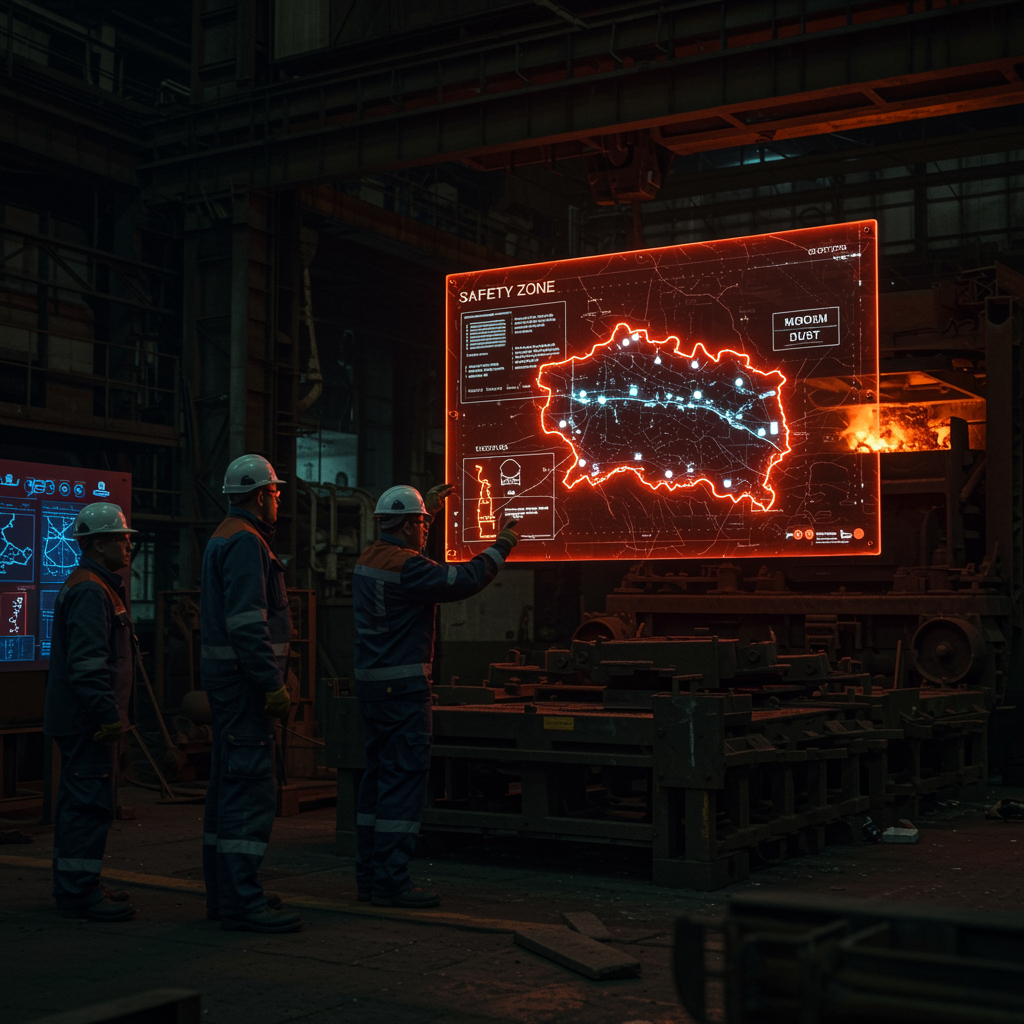

In the heart of every steel plant, immense forces collide — heat, energy, and motion. These environments, while essential for production, carry unseen dangers that must be carefully managed. This is where safety mapping steps in, transforming invisible risks into visible, actionable safeguards.
Seeing What Others Don’t
Steelmaking is a symphony of molten metal, high-voltage systems, compressed gases, and colossal machinery. Yet many of its hazards are hidden — dust clouds, electromagnetic fields, and invisible gases that can endanger workers without warning.
Safety maps help visualize these threats, pinpointing:
-
🔥 Hot zones where molten steel or gas poses burn risks.
-
🌫️ Dust-prone areas where fine particles threaten lungs or spark explosions.
-
💨 Gas zones where leaks can cause suffocation or fire.
-
🎧 Noise and vibration areas that erode health over time.
-
⚠️ Fall and access risks near pits or elevated platforms.
From Awareness to Action
Identifying risk is only the beginning. A robust safety map also dictates how to manage each hazard:
-
Installing thermal shields and physical barriers.
-
Using ventilation and dust extraction systems.
-
Applying color-coded markings and signage to highlight risk zones.
-
Defining emergency escape routes.
-
Mandating protective gear in high-risk environments.
Training Through Maps
Safety maps aren’t just static documents — they’re training tools. Operators learn to navigate both the plant and its risks simultaneously. Maintenance teams rely on them to plan inspections safely, while emergency drills depend on them for effective response coordination.
Why It Matters
A steel plant’s productivity depends on efficiency — but true efficiency can’t exist without safety. Every unmarked hazard risks both lives and operations. Safety maps bridge the gap between engineering design and human protection, ensuring every worker operates with awareness and confidence.
✅ Closing Thought:
At Steltech Makina, safety mapping isn’t a regulatory checkbox — it’s a core philosophy. By exposing hidden dangers and defining how they’re controlled, we make sure that every stride in steelmaking is matched by equal progress in safety.

